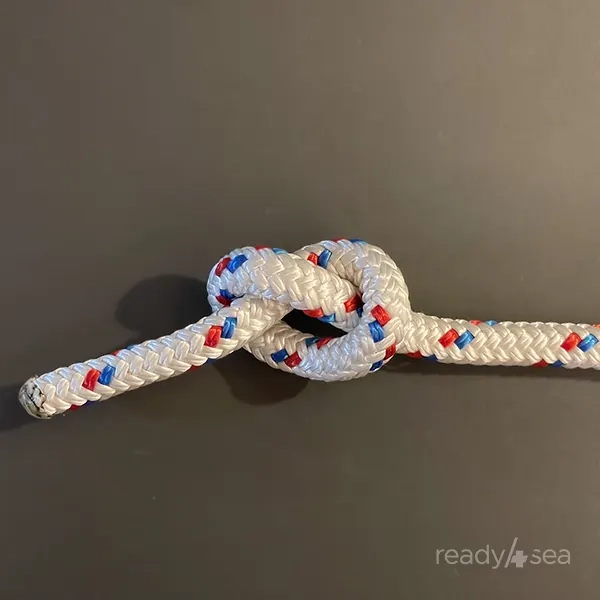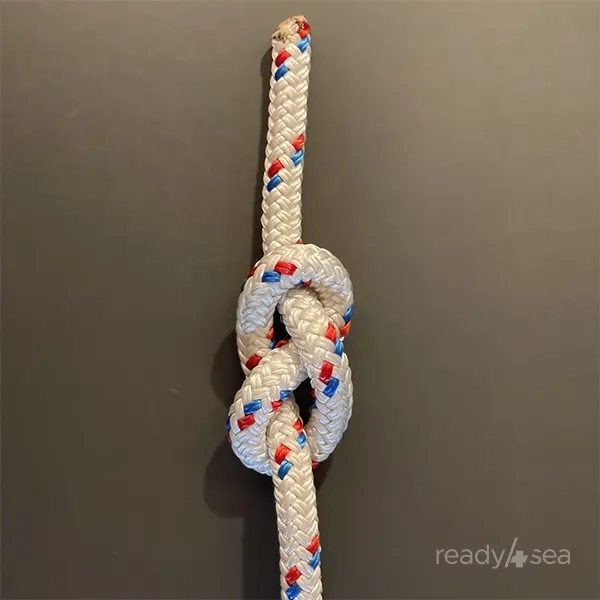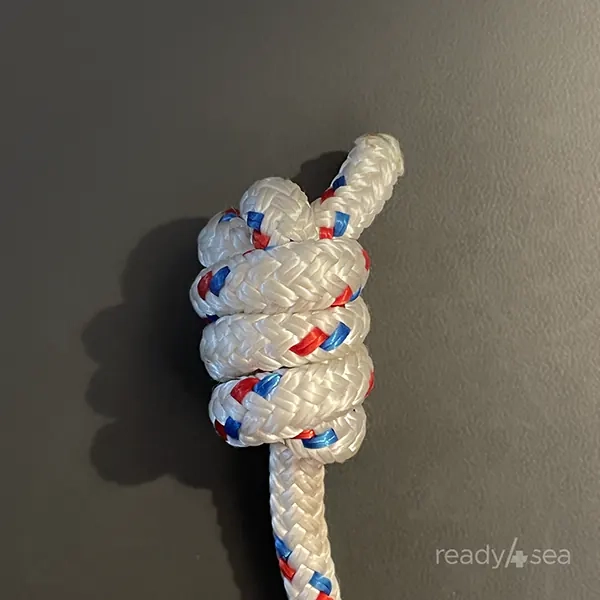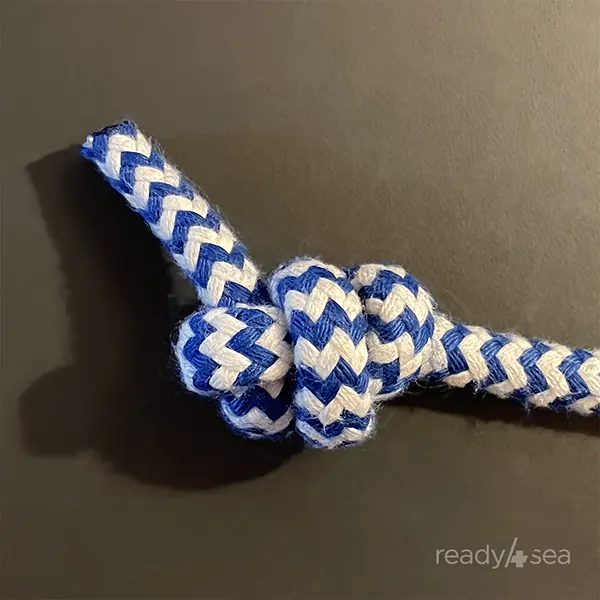Ensure Your Lines Don’t Unreeve Thanks to Stopper Knots
When you’re out on the water, ensuring that your lines stay secure and don’t slip through blocks or fairleads is crucial. Any sailor who has had to reeve a halyard down the mast after letting it go unsecured will opine. This is where stopper knots come into play. They are essential for sailors and boaters to manage lines effectively and safely. Of course, we won’t go through all those Ashley documented in his celebrated Book of Knots. Let’s focus on a few commonly used aboard boats: how to tie them and when to use them (and when not to).
What is a Stopper Knot?
A stopper knot is used to prevent a rope from slipping through a block, fairlead or hole. It creates a bulge or physical barrier that is larger than the diameter of the hole, block or pulley. This effectively stops the rope from unreeving on its own. These knots are particularly useful in situations where you need to secure a line temporarily or adjust the length of a line without cutting it. Depending on the situation, knowing how to tie the appropriate, reliable stopper knot is invaluable.
Overhand Knot

- How to Tie: The overhand knot is the simplest of knots. To tie it, create a loop by crossing the end of the rope over the standing part. Then, pass the end of the rope through the loop and pull it tight. It’s as simple as that, but it’s effective for many quick tasks.
- Strengths: It is quick and easy to tie, making it a go-to knot for temporary stops or quick fixes. It’s also very compact, which can be an advantage in situations where space is limited.
- Weaknesses: It can be difficult to untie after being subjected to a heavy load. It may also slip under certain conditions, especially if the rope is slippery or stiff.
- Tips: Use it as a temporary solution or a quick fix. It’s not ideal for long-term or high-load situations. If you need to untie it after it has been under load, try loosening it gently rather than pulling hard.
Figure-Eight Knot
(or Figure-of-Eight Knot)

- How to Tie: To tie a figure-eight knot, start by forming a loop. Then, pass the end of the rope under the standing part and back over itself, creating a shape that resembles the number eight. Pull tight to secure.
- Strengths: The figure-eight knot is stronger and more secure than the overhand knot. It’s less prone to jamming and can be easier to untie after being loaded. It’s also a good knot for situations where you need a reliable stopper that won’t slip easily.
- Weaknesses: While more secure, it can still be challenging to untie after heavy loading, especially if the rope is wet or has been under significant strain.
- Tips: This knot is great for situations where you need a bit more security than an overhand knot can provide. It’s commonly used at the tail end of jib, genoa or mainsail sheets because it hardly ever jams.
Stopper Knot
(sometimes Heaving Line Knot)

- How to Tie: This knot is created by forming a series of loops and tucks to create a weight at the end of the rope. Start by making a loop. Then make several wraps inside the loop around the standing part, tucking the end through the loop to form a compact, weighted knot. The wraps should stay in place evenly, and the knot should take on a compact cylindrical shape.
- Strengths: It adds weight to the end of a line, making it easier to throw. It also provides a substantial stopper that won’t easily pass through pulleys or blocks.
- Weaknesses: It is more complex to tie and can be bulky, which might not be suitable for all situations, especially where a compact knot is needed.
- Tips: A soft, easy-to-handle rope will make this knot easier to tie, especially for beginners. Because of its size, this is a useful stopper knot when you need a handful to grasp.
Stevedore Knot
(or Stevedore Stopper)

- How to Tie: The stevedore knot is also created by forming a loop. Continue by making one and a half turns around the standing end of the line, though not inside the loop as before, but up along the standing end. Finish off by running the tail end through the loop and tightening the knot.
- Strengths: It creates a very large and effective stopper, useful for heavy-duty applications where a smaller knot might slip or fail. It’s ideal for thick, heavy lines that need a strong stopper.
- Weaknesses: Due to its size and complexity, it can be cumbersome and difficult to tie quickly, especially in emergency situations or when you’re in a hurry.
- Tips: This knot is best for situations where you need maximum stopping power. It’s not typically used for lightweight lines but is excellent for heavy-duty mooring or towing.
Make sure you don’t miss our next instalments on bends, loops, hitches and other boating knots: subscribe to our monthly newsletter.
We’ll stop here
Stopper knots are an essential part of any sailor’s or boater’s toolkit. They provide a simple yet effective way to manage lines and ensure safety on the water. Whether you need a quick and easy solution like the overhand knot or a more robust option like the figure-eight knot, understanding how to tie and use these knots will make for safer and more efficient sailing. Practice tying these knots and incorporate them into your regular boating routine to ensure you’re always prepared. With these knots in your repertoire, you’ll make sure your lines don’t slip through blocks, cleats, clutches, fairleads, or deck organizers ever again.
Read On: Our next articles about knots have arrived. Learn all about bends, loops and hitches.
